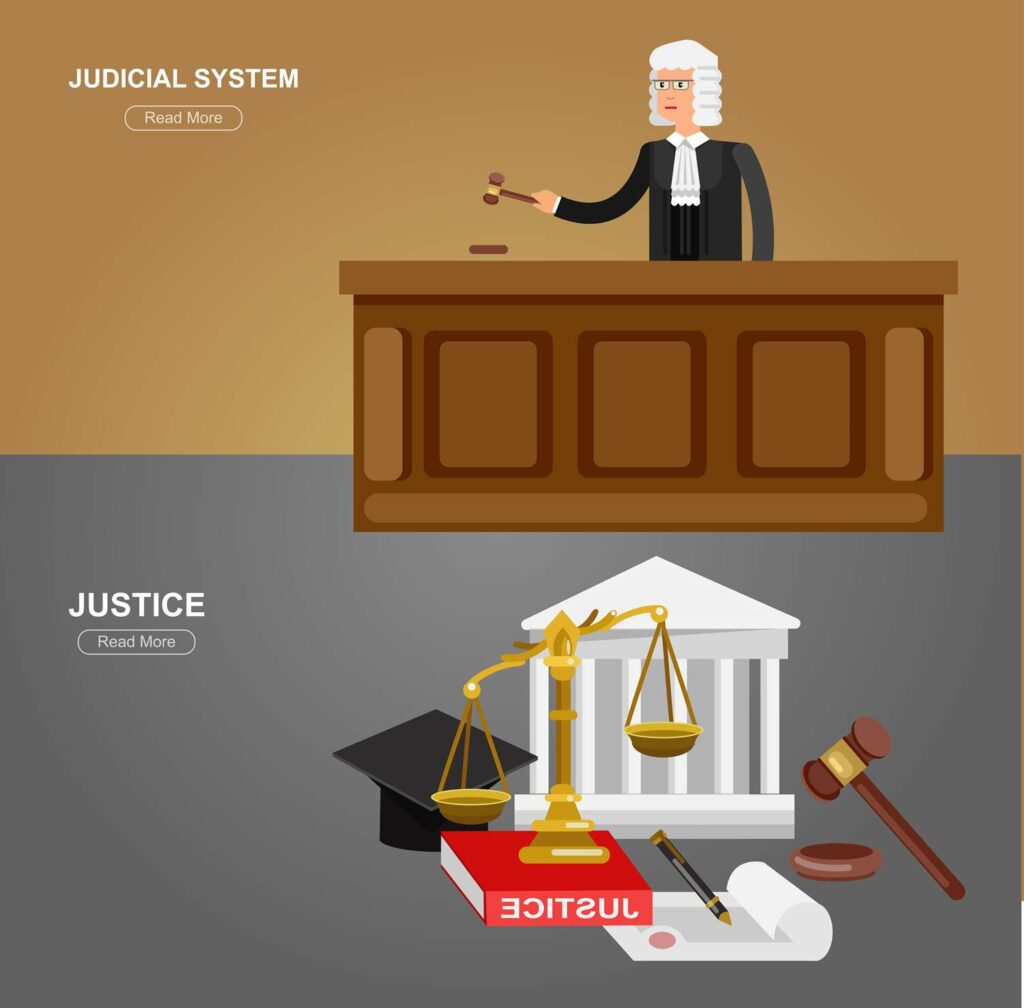CURRICULUM VITAE
of
BETH A. GRIMM,
Community Association Attorney, Mediator, Expert Witness,
Speaker and Author
LEGAL EDUCATION:
1988: J.D., John F. Kennedy School of Law, WC, CA.
1981: Certificated Paralegal, St. Mary’s College, CA
HOA RELATED EXPERIENCE:
- 14 years – Girard and Vinson, Walnut Creek – representing homeowner associations and school districts, advising boards
- 20 years – Beth A. Grimm, P.L.C. – representing homeowner associations and advising homeowners in CIDs (Common Interest Developments)
- Total: 34+ (combined) years of experience in solving problems in HOAs and advising homeowner/community associations and people who live in them.
LEGISLATIVE EXPERIENCE
I have spoken at public hearings before the legislature many times about CID issues and served on specially appointed committees dealing with Homeowner Association issues at the request of legislators and aides including Assemblyman Thomas Hauser, Robyn-Boyer Stewart, and Assemblywoman Barbara Lee. I have attended and given testimony at (including written testimony) several of the hearings of the California Law Revision Commission hearings relating to common interest development proposals for changes in the law in the past 20 years.
Relevant Expertise: Attended early on all courses required for the “Professional Community Association Manager” (PCAM) through Community Associations Institute (CAI), a national industry group serving associations and owners throughout the country, with 10 local California chapters, to learn the “nuts and bolts” of the industry.
Experience: I represent community associations in the areas of document updating and enforcement; elections, meetings, recall; formulation of policies, practices and procedures; construction and other contracts, service providers and managers; employment matters; legal disclosure requirements; architectural standards and review; and disputes that arise between association members, board members, neighbors, contractors, and residents, including the conduct of hearings, violation letters, and recommendations for action. I have advised associations in all aspects of insurance matters and disputes, and in considering and obtaining insurance coverage. I am able to interpret CC&Rs; (Declarations of Covenants, Conditions and Restrictions) and am familiar with various forms of disputes over common area and exclusive use common area, and the definitions of Condominiums vs. Planned Developments.
I represent concerned homeowners in various types of disputes with associations, interpretation of governing documents, communicating with boards, architectural issues, recall efforts, inspection of records and enforcement hearings.
I have conducted litigation, mediations and negotiations in various aspects of community association matters, for associations and for homeowners, including organized groups of homeowners. I have extensive mediation training and experience. I no longer serve as an advocate in litigation. I do consulting and expert witness work on a limited basis (as time permits).
Participation in Service Organizations/Volunteer Service: Besides the usual aspects of legal representation for associations, I served as a member of the Community Associations Institute-California Legislative Action Committee (CLAC) since 1988. This is a statewide group of industry professionals immersed in legislative issues and proposed laws that affect community associations. I served on the executive committee for that group as a delegate and as the Statewide Public Relations Chairperson for more than 15 years. I also served as a volunteer mediator for Contra Costa County Conflict Resolution Services and for the EASE (Early Attempt at Settlement) Program in the Contra Costa County Courts for more than 5 years. I served as governmental liaison regarding records inspection requests for a year in Contra Costa County.
Industry Group Affiliations: I am a prior member of the Community Associations Institute (CAI) and its College of Community Association Lawyers (CCAL). I was initiated into to the Distinguished Speakers’ Club of CAI and have spoken at several national and California seminars. I authored THE CLAC CORNER – a periodic update of “what’s happening in Sacramento”, the BILL OF THE MONTH alerts, and assisted with the grassroots fax tree for CAI-CLAC for more than 20 years. I had reached emeritus status as member of CLAC, when actively participating. I served as the East Bay Resource Chairperson for ECHO (Executive Council of Homeowners) for more than 6 years during two different time periods.. ECHO is a more localized industry group serving associations and homeowners in the Bay Area and throughout the state. I also serve on the Legal Resource Committee of ECHO for more than 20 years. I have authored numerous state and national articles for the CAI (THE CAI UPDATE) and THE ECHO JOURNAL for ECHO. I belonged to the California Association of Community Association Managers (CACM) for 10 years. These are the 3 major industry groups for homeowner associations in this state.
Here is an example of what I wrote to help protect the copyright for one client:
How to Protect the Copyright of Wall Decals Design?
Are you a creative professional who designs wall decals? If so, then you might be worried about someone stealing your design. After all, if someone can simply recreate your design and sell it as their own, then they could potentially undercut your business. So, how can you protect the copyright of your wall decals design?
Copyright law protects your wall decal design from being copied without your permission. To copyright your design, you will need to register it with the United States Copyright Office. You can do this online or by mail. Once your design is registered, you will have the right to file a lawsuit if someone copies it without your permission.
To increase the chances of winning a copyright infringement lawsuit, you should marked your designs with the copyright symbol © as well as your name and the year of creation. You should also keep detailed records of when and where you created the design, as well as any changes that you made to it over time.

How to Protect your Creativity
The first thing you need to do is register your design with the U.S. Copyright Office. This will give you legal protection in the event that someone does steal your design. You can register your copyright online or by mail; for more information, visit the U.S. Copyright Office website.
Once you have registered your copyright, you should include a copyright notice on each of your wall decals. This notice should include the year of first publication and your name (or the name of your company).
For example: “Copyright 2018 John Doe.” Including a copyright notice will help discourage would-be thieves, as they will be aware that you are taking steps to protect your intellectual property.
If someone does steal your design, then you can take legal action against them. First, send them a cease and desist letter, demanding that they stop using your copyrighted material.
If they continue to use your design after receiving this letter, then you can file a lawsuit against them in federal court. Remember, it is important to register your copyright before taking any legal action, as this will give you the strongest possible case.

Conclusion
As a creative professional, it is important to take steps to protect your intellectual property. If you don’t, then someone could steal your work and sell it as their own. By registering your copyright and including a copyright notice on each of your wall decals, you can help deter

Teaching
I taught a class certified by the Department of Real Estate in California called: “The Davis Stirling Act in Plain English” for 8 hours of DRE continuing education credit for 5 years and also have conducted monthly Brown Bag Lunch and Legal-EEZE programs at the teaching center where my office is located for about 5 years.
TRAINING/EXPERIENCE AS A MEDIATOR
1994, 30 hour training, Pepperdine University, Center For Dispute Resolution, Mediation Skills 1994, Certification Training, Contra Costa Conflicts Resolution Panel (CRP) training, Diablo Valley College, Pleasant Hill, CA November, 1994, 40 hour training, Rosenberg and Moulton, “Mediation Works”, Tiburon, California March, 1995, 30 hour Certification training, Contra Costa County Bar Assn July, 1996, 30 hour advanced training, Pepperdine University, Malibu, CA July, 1997, 30 hour advanced training, Pepperdine University, Malibu, California November 1998, 30 hour advanced training, Tony Roffers, Sacramento October 2005, 30 hour training with Steve Rosenburg, Marin County Attorney and Trainer
Volunteer Mediator, CRP Community Based Mediations and Contra Costa County Bar Assn. Court Mediations: I served as a volunteer mediator for the Conflicts Resolution Panel of Contra Costa for more than five years. Some of the mediations were large group mediations involving vehement neighborhood disputes. All mediations in which I participated with that group have come to successful resolution by agreements of the parties. I also volunteered with the courts EASE program (a form of mediation) and served on my local Bar Association ADR Committee for several years.
HOA Mediations: I have conducted mediations within my field of law through referrals on the subjects of neighbor-to-neighbor and owner to board disputes, enforcement, architectural and use issues, and resolution of very difficult situations in HOAs.



SERVICE, WEBSITE AND BLOGS
Speaking and Authoring Expertise: I write articles for and speak for various CID industry groups as well as local realtors groups to bring relevant information to owners, realtors, homeowners, managers and board members. I have conducted my own individual seminars and spoken at many California industry seminars. I have also spoken at national seminars on homeowner law and use of electronics in the law office.
My writings are enjoyed by many others as well. For 30 years I have authored and distributed newsletters detailing the nuts and bolts, practical and legal aspects of running a homeowner association and problem solving for Boards and Owners in California, In the early years it was called THE CALIFORNIA HOMEOWNERS ASSOCIATION LEGAL DIGEST. Now my free monthly E-newsletter is called WHAT’S NEW IN HOA LAND. I have authored 3 books: THE DAVIS-STIRLING ACT IN PLAIN ENGLISH, FINDING THE KEY TO YOUR CASTLE, THE CONDOMINIUM ANSWER BOOK (published by Sourcebooks, Inc.) and most recently, THE SMALL HOA SURVIVAL GUIDE. These and more than 35 Primers and Guides on numerous topics are available here on my website.
My books and the newsletter articles have been reproduced and quoted widely and have been well received in the industry as helpful tools.
For more than 20 years, I have operated a website offering an incredible amount of free information for readers, all related to common interest development living and the law. (www.californiacondoguru.com). This website is listed on the California Department of Consumer Affairs website reference page as a reference. Over the past 10 years I have kept up blogs to address problems and questions posed by homeowner association boards, managers, and homeowners, as well as industry vendors and professionals.
AWARDS – RECOGNITION
- 1994 Distinguished Service Award for volunteer efforts for the Community Associations Institute – California Legislative Action Committee (CAI-CLAC).
- 1994 Bay Area Chapter CAI President’s Award -CAI Bay Area Chapter.
- 1995 Distinguished Service Award, CAI-CLAC
- 1996 Crystal Madonna from by CAI/CLAC for volunteer service.
- 1996 Author of the Year, CAI National
- 1996 Alumni of the Year Award, John F. Kennedy University School of Law
- 2005 Speaker of the Year – Bay Area/Central California Community Associations Institute (CAI)
RATES: For most mediations, based on an estimate of usual mediation 3-6 hours – $400 per hour plus travel time and expenses. [$2600 Retainer required, split among the parties involved, refunds will be paid if retainer is not used, additional retainer will be required if multi-day mediation is required or followup sessions are needed.]
It’s coming up on the HOLIDAYS, the most joyful time for some people, but the most stressful for others. You will be called upon to exercise the most patience if you want to get through the holidays with a smile on. Perhaps a few pointers on handling “the difficult ones” will help.
First of all, remember that for many it is the outside “stressors” that are causing them to be short, rude, obnoxious, rushed or seemingly impossible to deal with, so if you add to that stress, you will get it back probably 5 times over.
Remember that some nasty people remain nasty even if you try to “kill them with kindness”. So don’t waste too much time on these folks – just do the minimum needed to get the job done, whatever it is.
Remember that a crazy person often remains a crazy. Belligerence is seldom curable. Selfish behavior is common in self-centered people. Stupidity, although it can be cured, takes a willing idiot.
You may be expected to fix everything for everyone, but if you can just remember to do your best, and be proud of it, your side of the “house is clean”. Ghandi says that it is not important to be a masterful human being, but to be a “human being masterfully.”
So what can you do when faced with a difficult question or person? Get help. Look for answers (the internet is an extraordinary resource), and take time for yourself too, this holiday season. How do you do that?
Learn some breathing exercises and take a few minutes every day to do them. Color up your desk with pens, pencils, decorations, a new coffee mug, a singing Santa, anything that can bring a smile each of the 30 days of December.
I wish I could offer a viable solution that could be applied to all difficult people situations. I have written about noise issues, irresponsibility in reporting leaks, confrontations by idiots and how to respond, people who get in your face, people who are scary, how I cope with stress, and the importance of being pragmatic when things get difficult. And keep in mind that you can be the greatest problem solver, still not every approach works in every situation. I found myself hanging up on someone the other day whom I believed was being really unreasonable, because I had no energy or desire to keep talking to someone who had an “I deserve it all at anyone else’s expense attitude” going on. It was a very subtle hangup – not a slam-it-down-crash-in-the-other person’s ear – but just a little “click”. Did I feel good about it? KindaŠ..
If you leave your house tomorrow and every single day thereafter with a promise to yourself that you are going to treat every person that you come into contact as if they were your “best friend” (and be sincere), I am betting your stress will be less, and your life might very well change, not because of those around you, but because of you. My best to you this holiday season!!!!!!!!!!!!!!!!!!!!!!!!!!
What Are The New Agenda Requirements After SB528? What does it mean?
The new law not only requires posting or providing an agenda with the meeting notices, it prohibits the Board from taking action on anything that is not on the agenda, … except for the exceptions.
To be specific, first of all, it applies to board meetings, not membership meetings. The requirement for distributing the agenda is tacked on to the meeting notice requirements found in Civil Code Section 1365.05(f). Here is the scoop, in Q and A form.
Question: What if the notice of meetings is in the Bylaws or Association newsletter and that comes out before the agenda is set?
Answer: Find a way to distribute or post the agenda at least 4 days before the meeting. That might be with the billing statements when they are mailed, in the newsletter if the timing works, or by posting in the common area. It would be a good idea to include another copy of the notice with it, even if it was already distributed. It may not be necessary, but it makes sense.
Question: What if the HOA does not have any common area to post in?
Answer: That is a little more difficult. You can mail the agenda, post it by the mailboxes if there are any clusters, put a kiosk up somewhere near a street if there are private streets, a parking area if there is any, on a street lamp, or anywhere there is space available, that you can get permission. Choose the place all owners are most likely to drive by. If you still cannot find a posting place, but you have a website, posting on the website. Use good faith to try and find a reasonable way to get the agenda before the members.
Question: What are the exceptions?
Answer:
The law applies to “nonemergency” meetings only.
The law does not prevent the Board or its staff or agents from talking to the members about something not on the agenda. It is not muzzled by this law.
The law allows Boards to communicate instructions to its management and staff.
The new law allows for taking action on items that come up before/at the meeting that are not on the agenda if certain findings are made as follows (choose from any one of the following):
(1) A majority of the board members present at the meeting determine that an emergency situation exists. [An emergency situation exists if there are circumstances that could not have been reasonably foreseen by the board, that require immediate attention and possible action by the board, and that, of necessity, make it impracticable to provide notice.]
(2) Two-thirds of the members present at the meeting, or, if fewer than two-thirds of the board members are present, by unanimous vote of the members present, determine there is a need to take immediate action. The Board must find that the “need” arose after the agenda was prepared and posted or distributed, OR
(3) The item was on an agenda for a prior board meeting and did not get put on the agenda for the meeting when it comes up again. The statute says on an agenda for a prior meeting that took place “not more than 30 days before”, and that the item “was continued to this subsequent meeting.” This language is confusing and undermines the point. If the prior meeting was 31 days prior, and/or the minutes from that meeting do not say that the matter was continued, does this apply? One could argue it practically does apply, given the apparent intent to tie two meetings together, without the understanding that they can easily occur 30-35 days or so apart, even when held monthly. It does not appear that Boards that meet quarterly can stretch things to tie in a prior meeting held the prior quarter.





Neighbor Disputes, “Don’t Say “No” ….
In this day and age of increasingly short tempered people, threats of legal actions and lawsuits, and general disrespect, many board members are faced with the question as to whether or not the association should have some obligation in a neighborhood dispute. The basic thing that the association directors should understand is that in any situation that constitutes a possible violation of the CC&Rs;, an “it’s not our problem” attitude can lead to serious consequences. If a homeowner is harassing another homeowner, and it only seems to be happening between those two people, the usual advice is (and should be if it’s serious): “call the local police.” In less egregious situations the common advice coming from the board (and often the Association attorney) is “work it out between yourselves because no one else is involved.” However, this proved to be the wrong answer for an association on the East Coast a few years ago when one of the owners demanded that the Association get involved. The Association did not get involved nor did it address the “misbehaving neighbor” (allegedly a “white supremist”). The owner (a black lady) served papers on the other owner for harassment and discrimination, and brought the association into the legal claim too. The association tried to get out of the lawsuit stating it was not responsible for the harassment and discrimination (and it certainly would never have been able to control the offensive member who was probably guilty of those things). However, the association failed to get out of the lawsuit, mainly because it “did nothing.” The Bylaws of the Association said that the Board had the power to address violations of the governing documents and said that illegal activities were prohibited. This is pretty common for association regulatory documents. This was enough for the court to say: “Stay in and defend yourself.” I do not believe the Association’s insurance covered discrimination claims so the risk exposure and costs of defense would be staggering. The association was forced to stay in the litigation and the rumor was that the ultimate settlement (which was confidential) involved the association purchasing the unit of the complaining owner to avoid litigation costs and the risk of extensive damages. Harassment is a fairly common complaint in HOAs. So are noise issues, conduct, acting out, and pets and parking complaints. These often involve neighbors, grudges and emotions.
At the very least, seek good legal advice in any neighbor to neighbor dispute. Do not assume that the matter is just a fight between two parties. Often there is a bona fide violation of the rules involved. Conduct (such as swearing, staring, glaring, threatening words or gestures, door slamming, and name-calling) can be considered a nuisance. Most CC&Rs; prohibit nuisances. If the two parties are slinging it back and forth, that is one thing. If one side is trying to live peacefully in their home and not instigating the neighbor’s wrath, that is another. Board members can receive some protections in the law from Corporations Code Section 7231 and Civil Code Section 1365.7 which provide a “safe harbor” and some immunity for volunteer board members … if they act in good faith. In these cases, that could easily include: (1) reviewing matters to see if there is a CC&R; or rule violation that should be addressed and (2) seeking the right kind of expertise to help with the situation. Threatening either party with gestures or the threat of physical action of any kind would not be “good faith”. Simple words like “I am a peace officer. I own a gun …”could be construed as a threat of physical violence. Threats like: “If you leave your cat out at night I cannot be responsible for what happens to it,” sounds more like a threat than a reasonable statement of a rule. Common sense is the key, and case law, while it provides guidance, cannot provide day to day answers to the questions that come up for board members. If an owner brings a complaint to the Board that involves their neighbor, review it, and get enough information to determine whether either party should be subject to any warnings or disciplinary conduct, or they should be referred to local low cost mediators. Either response could be correct in the right circumstances, and could satisfy the Board’s obligations of proper leadership, assertion of power and response to a duty imposed by the position.
FYI – AUGUST 1, 2007 MORE ON EARTHQUAKE INSURANCE
The question keeps coming up – ” … why would we (condominium board members or owner members) want to keep earthquake insurance when it costs so much and promises so little?
This is part of it: the insurance “pendulum” swings back and forth, meaning it goes from being affordable and desirable to expensive with decreased coverages, and back again. Rumor has it that the pendulum might begin to swing back again the other way as early as later this year.
Another point: The ultimate benefit is not necessarily 100% coverage. That is not feasible to get these days. The ultimate benefit is having at least enough coverage so that the members are not devastated by such an event … at least enough coverage that owners are encouraged to stay and rebuild, even if a loan is needed to bear the uninsured portion of the damage costs.
Another point: If your HOA steps out of the market intending to come back in when the prices go down, you might be sorely disappointed. Carriers limit their risks by limiting inventory as to geographic areas, building types, etc., and even if the cost goes down, you are not guaranteed of getting back into the market in as favorable position as you once were because the carrier you used before may no longer have any room to add you back in.
Another point: The California Earthquake Authority (CEA) says, and probably rightfully so, that there is no area of “low risk” in the state. There are only areas of “higher” risk and “lower” risk. Living in California is a choice. Living in California is expensive. Living in California is living in “earthquake country”. Earthquake insurance can be very expensive. Where is that surprise in that?
Another point: Much of the real estate in California has appreciated providing very beneficial return in the form of increased appreciation for property owners. But the amazing thing is that those owners who are benefiting from these [inflated] property values aren’t willing to pay a lot more for whatever insurance protections are available. That is the real surprise.
Another point: keep in mind what Boards are normally duty-bound to do …. to protect property values . Dropping earthquake insurance coverage does not seem consistent with that stated purpose.
And last, but not least: In a perfect world all owners in the HOA would carry individual earthquake insurance through the CEA and all would share the cost of a reasonable level of master coverage for the buildings, whatever the cost was. But Owners have to know that it is available, and be encouraged to buy it. This may be the best protection for EQ that association members can get, whether or not the Association carries the master policy. Owners can procure a private EQ policy through the CEA of up to $50,000 loss assessment coverage (coverage that would qualify to pay for the special assessments imposed by the HOA for earthquake building damage).
There are two articles on the guru web and several blogs on this subject. Wake up and smell the roses. In short, and in plain English, instead of throwing up your hands, gather information that helps members fully understand the adverse ramifications of dropping the EQ coverage and helps them get educated as to how to protect themselves to the extent possible, albeit expensive. Understand that by dropping EQ coverage, Boards are letting owners with little or no equity “off the hook”. Dropping insurance coverage puts everyone at risk, even those who have considerable equity. Why shouldn’t every member of the community contribute a fair share for insurance to protect property values in the community? If those without equity do not contribute to premiums and carry individual insurance, the special assessments to rebuild will be much higher, and those without equity will walk away – how do we know this? One word – Northridge. And every owner that walks away leaves those with equity holding all the bills.

JULY 2007 – FYI – SIMPLE THINGS TO LOOK FOR IN A CONSTRUCTION CONTRACT
- Clarity of Parties: Make sure the party names are clear, the HOA uses the correct legal (corporate) name, and that the person with the license is same person contracting.
- Clarity of Work To Be Performed: Don’t rely on oral conversations or promises. Make sure the work is clearly defined in the contract to eliminate argument over what was or was not to be done.
- Consideration. Make sure that the contract is specific as to incremental amounts due, and that amounts are tied to various timing considerations in the project. Make sure there is provision for withholding 10% until check-listed out.
- Licensing Verification. Make sure the contract provides for required licenses, and that failure to maintain the license allows for immediate termination of the contract. Make sure you check the [California] State Contractors License Board website for pertinent names, insurance, complaints and claims.
- Bonding/Insurance: Make sure that contractor’s required bond is in place, as well as any other performance and/or labor and materials bonds you require, and a must have is liability insurance and workers compensation if contractor is bringing workers to the site. Make sure to ask for evidence of specific coverage necessary for work in HOAs – it is a common exclusion and requires an endorsement so get a copy of the endorsement. Verify insurance, require insurance throughout contract, and state in contract that it is terminable at any point upon which insurance is denied, terminated, lapsed, or cancelled. Require that the HOA be named an additional insured on the insurance policy.
- Indemnification: Make sure that contractor assumes responsibility for any damages that the HOA incurs because of the contractor and that he or she indemnifies the Association for negligence as well as any other conduct on site. Look for an indemnification clause in the contract. Seek legal advice to understand it.
- Understand the Potential “Parties Defendant”. Make sure that all parties can be brought “to the table” in the event of a disagreement (Example: watch for exclusion of architect in AIA contracts).
- Statutory Protections. Make sure that the Association is protected because of new 2004 Labor Laws relating to responsibility for injuries of uninsured subcontractors. (See next FYI for more.)
- Termination Provisions. Make sure that contract is terminable upon reasonable cause and that the termination provisions are clear and understandable and it is an option if the contractor fails to perform. Make sure that requirements to claim breach of contract are clear. Note, if there are notice requirements that HOA must give contractor notice of problems and a chance to cure, failure to do so can make termination difficult. 10. Attorneys Fees and Dispute Resolution. Make sure there are sufficient protections to assure that if the HOA has to resolve issues (1) it has the right to sue if necessary, (2) recovery of attorneys fees to the prevailing party are provided and (3) there is at least a suggestion that ADR should come first. The above list is not exhaustive; it is offered as a guide © Beth A. Grimm, PLC. to help you understand basically what is (or should be) incorporated into a contract, and what to look for. A contractor’s proposal – commonly offered by the contractor, is not generally sufficiently protective for the Association. One of the biggest problems areas where the proposals prove insufficient is termination. Another is indemnification. Another is incremental completion of work and payments.
JUNE 2007 FYI –
NOTES ON HOA BUDGETING – Do you need a cushion? Definitely Yes.
California Civil Code Sections 1366 and 1366.1 say: 1366. “(a) Except as provided in this section, the association shall levy regular and special assessments sufficient to perform its obligations under the governing documents and this title. 1366.1. An association shall not impose or collect an assessment or fee that exceeds the amount necessary to defray the costs for which it is levied.”
So … HOAs are expected to levy assessments sufficient to cover expenses, but not more than “the amount necessary” for expenses. That’s a catch-22 scenario that has been referred to me as an unreasonable expectation of “zero-based budgeting,” (a phenomenon that is virtually impossible in an HOA) imposed by California legislators. No doubt, estimating costs has become more and more difficult as they keep rising. Just when one area is under control, another industry-wide problem surfaces (water, utility, legal compliance, and insurance costs to name a few). And then, of course, there are individual HOA issues as well, many of which involve the realization of severe budgeting shortfalls attributable to deferred maintenance. Sometimes it’s simply an owner “gone mad”, or an architectural issue rising to the status of binding arbitration or superior court.
A reader of my publications (a CPA) and I recently had a dialogue about how to deal with the difficulties that arise for boards in trying to estimate exactly what the yearly needs of an HOA are. This is what she said:
“I do feel that boards have a tendency to cut the budget too close and they have no room for unexpected events. And, as we know, it is difficult (and unpopular) to then ask for special assessments when a shortfall occurs. That is why I recommend as a good business practice to keep 1-3 months of operating expenses as a “cushion”. CAI National recommends ? month to 2 months in their M-206 course. Without this cushion, the Association tends to invade reserves or not make monthly reserve contributions. At 1-3 months of expenses in contingency, I feel that the HOA CPAs can still make appropriate tax decisions. I believe that even the California legislature would understand a reasonable amount set aside for unexpected events.”
I have no comment on what the Legislators in California might find reasonable or unreasonable – or judges for that matter – so the question remains, how do you plan for the unexpected Š by including a “contingency line item” or by “padding” other budgetary categories with an extra percentage or dollar amount? Of course, you will want to consult with your own CPA as you do not want to include categories that might raise a red flag to any taxing authority if your HOA is audited. But the truth is that real life practicalities require some “fudging” (use of contingency budgeting) in order for boards to cope. My express concern is that if Boards budget on the high side for 3 months worth of assessments for “contingencies”, might they be in jeopardy of violating the “letter” of CC 1366/1366.1.1 or triggering a tax issue? It is prudent to ask your CPA if it would it be better to put the padding in estimating higher costs in the areas of collection costs and uncollectible debt, legal services, estimated costs of statutory compliance, or in all accounts (perhaps a 10% increase in each in addition to the basic criteria for estimating costs), or a contingency fund. I asked my CPA colleague and she said this:
“What is likely occurring with Associations who budget to build up the operating fund to have 1-3 months of operating expenses (which generally takes several years to accomplish) is exactly what you said during the budget process each year they “pad” particular line items for contingencies. Some also have a separate “contingency or miscellaneous” account, but that amount is usually minimal. I really feel that if the operating fund/members equity balance builds up to one to three month’s of operating expenses, that a court would be hard-pressed to state that there wasn’t a valid business purpose to have this “cushion”. Even non-profits have a cushion for unexpected events and cash flow requirements. In my opinion, this would not violate 1366/1366.1 as this is industry standard and is good fiscal management. If an Association has zero equity, that leads to the imposition of special assessments (which is more unfair to homeowners) or borrowing from reserves.”
………………………….We (the CPA and I) hope this makes some sort of sense and helps!!

MAY 2007 FYI –
FAIR HOUSING ISSUES:
Hit With A Request for a Reasonable Accommodation for a Disability?
How much money are you willing to spend? But before you answer … I should add … to avoid paying $1 million in damages after-the-fact.
What am I saying? That you should just “give in” if someone asks for something like a van accessible parking space, or hand railings, or a ramp? That you should ignore the impact on the other owners? Not exactly. First and foremost, consult with your own attorney. We don’t all analyze these things the same way. What I am saying, more or less, is that if there a way you can reasonably make the accommodation, even if there is a cost, or grumbling by other residents or owners, give it strong consideration. Without having to think about it too long or too hard, consider doing it as quickly as possible.
Why? The Department of Fair Employment and Housing (DFEH) is a formidable opponent. Two years ago, there was reported a settlement in a disability discrimination lawsuit for a tenant in San Francisco. The scenario goes something like this: the tenant, who had been living the building for 24 years, over time, had developed a serious degenerative joint disease. She asked for an accommodation of an accessible parking space and also asked for extra keys for her live-in caregiver. The landlord, according to the report, denied the request. The tenant contacted a group called Project Sentinel and they developed an interest, and became a “real party in interest” in a lawsuit filed by the DFEH. After the lawsuit was filed, and even though an accessible parking space was granted, it was too late for the Landlord. The price was very high. After an 8 day trial there was an award in favor of the resident for “compensatory” damages. Then, before the Judge sent the jury back to “deliberate” the amount of “punitive” damages, the parties settled the case for $1 million (sounding suspiciously like an insurance policy limits settlement). The landlord also had to develop and disseminate to all residents a written policy regarding their rights under the FEHA (Fair Employment and Housing Act), had to undergo special training, and had to post the court’s order showing it violated the FEHA. You can find more information at the web site which is www.dfeh.ca.gov.
It is true that the case involved a landlord – tenant situation, and in those situations, the landlord generally has more leeway to grant accommodations than in an HOA. However, there is a law in California (Civil Code Section 1360) that makes it clear that HOAs need to grant a reasonable accommodations for a disability when possible, and though it allows the HOA to force the owner to pay to put it in and to remove it, it does not appear to me that is the best solution in all cases. It may seem so, but the HOA may pay later if the DFEH decides that is not fair (and please note the reps seem very strongly biased that the disabled that they represent should get the accommodations requested, at no cost). There are other considerations: Do you have insurance coverage for discrimination lawsuits? If not, then ending up in a lawsuit can be quite painful.
And, there is another glitch – in California – Civil Code Section 1363.07 prohibits granting exclusive use of common area to any owner without 2/3 approval of the owners. So you will need to figure out what to do about that if the request involves common area space.
In many cases, you could spend a thousand or two for an accommodation, or for an attorney to fight the fight, and then more thousands to defend an administrative complaint, … you probably get it – don’t become the $1 million example. Get good legal advice if you are confronted with a request for an accommodation.
FYI – APRIL, 2007
SMOKING IN HOAS – HOW FAR CAN YOU GO TO PROHIBIT IT?
May we ban smoking in the common areas?
May we ban smoking in the units?
or, from the smokers:
How can they prevent us from smoking? It’s a free country!
The answer is “yes”, in some localities under some conditions, homeowner associations can ban smoking in common areas, and perhaps even in units. There is no constitutionally-based right to smoke. One would think the seminal cases might happen in a state like California, where smoking is banned in many jurisdictions in restaurants, bars, office buildings and public places. Legislation has been introduced (but failed before it came to fruition) that would have allowed homeowner associations to ban smoking in the common areas and that would have allowed certain actions to be taken against residents/owners who allowed smoke to “waft” between walls. However, other states have been more progressive (from the point of view of the courts finding against those who came with complaints about second hand smoke coming from a unit in a condominium). For two examples:
In Boston, in 2005, a jury found that heavy smoking was grounds for eviction of the tenants. When this judgment came down in 2006, the news story by Ralph Ranalli and Jonathan Saltzman, of the Boston Globe reported the following: “In a case that tobacco law specialists say is one of the first of its kind in the nation, a Boston Housing Court jury ruled that a South Boston couple could be evicted from their rented water-view loft for heavy smoking, even though smoking was allowed in their lease.”
In November of 2006, in Golden, Colorado, a story was reported that illustrates some courts are willing to go a step further. “The Denver Channel.com” reported: “A judge has upheld a homeowners association’s order barring a couple from smoking in the town house they own. Colleen and Rodger Sauve, both smokers, filed a lawsuit in March after their condominium association amended its bylaws last December to prohibit smoking…. In a Nov. 7 ruling, Jefferson County District Judge Lily Oeffler ruled the association can keep the couple from smoking in their own home…Oeffler stated “smoke and/or smoke smell” is not contained to one area and that smoke smell ‘constitutes a nuisance.’ She noted that under condo declarations, nuisances are not allowed.
This kind of litigation activity across the country, although not binding in any court in other jurisdictions, indicates a trend. Do not take this FYI as legal advice as to what you can do in your own HOA. But you may wish to pose the question to your own legal counsel – and discuss the ramifications of amending the documents to ban smoking. Don’t expect a cake walk if you decide to clamp down on smoking. There are still some die hard smokers around. In most cases it would be important to try other measures before getting drastic, to deal with a wafting smoke issue.
FYI March, 2007
RESERVES DISCLOSURE SUMMARY CHART – NEW REQUIREMENTS EXPLAINED
Last month I presented you with the new reserves requirements per AB 2100 (to Civil Code Sections 1365 and 1365.5). As promised, this FYI has the new Summary Chart and provisions. Please note that you can also find this information on the website under the HOA ANNUAL DISCLOSURES Checklist link. I have added some commentary to help you catch the nuances of the changes. Chaio…
Assessment and Reserve Funding Disclosure Summary
[Must be distributed to members annually, with the budget package.]
(1) The current regular assessment per ownership interest is $________ per _. Note: If assessments vary by the size or type of ownership interest, the assessment applicable to this ownership interest may be found on page of the attached summary. [Ex.: when special assessments are based on square footage or ownership interest in Common Area and the like – then you need to attach a separate page – this information is usually in the CC&Rs.;]
(2) Additional regular or special assessments that have already been scheduled to be imposed or charged, regardless of the purpose, if they have been approved by the board and/or members:
Date assessment will be due: Amount per ownership interest per month or year (If assessments are variable, see note immediately below): Purpose of the Assessment:
TOTAL:
Note: If assessments vary by the size or type of ownership interest, the assessment applicable to this ownership interest may be found on page __ of the attached report.
(3) Based upon the most recent reserve study and other information available to the board of directors, will currently projected reserve account balances be sufficient at the end of each year to meet the association’s obligation for repair and/or replacement of major components during the next 30 years:
Yes _ No_ [Comment: Here is where you have to be careful – although your reserve study may give ending balances that coincide with the past or present year’s budget showing intended reserve allocations to be taken from the regular or an existing special assessment, make sure that the monthly or other incoming assessment portion is actually being deposited into the reserve fund accounts. Some boards have discovered this is not the case only to be told by management that “there was not enough money in the operating funds to make the transfer to reserves because of other expenses.” Sometimes the reserve allocation or a portion of it is being diverted to pay off a loan and that may not show up until the end of the year when adjustments are made. And sometimes, a recent disaster like Hurricane Katrina has resulted in increased costs in shipping and materials for all building construction and the Board knows that the estimates of cost of projects needs to be adjusted upwards either in the present or future years. All of these factors can be listed as part of the Board’s answer “yes” or “no”.]
(4) If the answer to (3) is no, what additional assessments or other contributions to reserves would be necessary to ensure that sufficient reserve funds will be available each year during the next 30 years that have not yet been approved by the board or the members. [Again, this takes a thought process based on past, current and future events and expectations. It pays to spend some brainpower on this section and also to keep some documentation supporting it in the records of the association, in case later on the conjecture (which is really all it is) proves inadequate or to be an overstatement of needs. All one has to know to avoid personal liability is that due diligence is the one of the best mechanisms of defense in a “negligence” claim. Due diligence does not include pleading ignorance of the law, though. ]
Approximate date assessment will be due: Amount per ownership interest per month or year.
TOTAL:
All major components are included in the reserve study and are included in its calculations. [Note that this statement is different from the prior form and seems to imply that all major components must be included in the funding calculations. Yet 1365 says that the Board must list the major components that are not included in the funding plan and say why they are not being funded. So don’t miss this requirement.]
Based on the method of calculation in paragraph (4) of subdivision (b) of Section 1365.2.5, the estimated amount required in the reserve fund at the end of the current fiscal year is $____, based in whole or in part on the last reserve study or update prepared by _ as of (month), (year). The projected reserve fund cash balance at the end of the current fiscal year is $_, resulting in reserves being _ percent funded at this date. If an alternate, but generally accepted, method of calculation is also used, the required reserve amount is $_. (See attached explanation) [Here it is up to the Board to provide an explanation of the percent funded. It is easier to express, at least as I understand it, if the straight line method of funding is used. If another method is used, the simple answer to disclosure is have your reserve study preparer help calculate the funded percentage of the reserves. I hear different speakers focus on different things for this disclosure. Some tout depreciation as a key factor. Others do not mention depreciation of existing components. Seek out the correct expertise on this – that is a component of defending any claim based on breach of fiduciary duty. Seeking the correct expertise is a defined element of good faith and good faith is a key element in defense of such a claim.]
Based on the method of calculation in paragraph (4) of subdivision (b) of Section 1365.2.5 of the Civil Code, the estimated amount required in the reserve fund at the end of each of the next five budget years is $______, and the projected reserve fund cash balance in each of those years, taking into account only assessments already approved and other known revenues, is $______, leaving the reserve at _ percent funding. If the reserve funding plan approved by the association is implemented, the projected reserve fund cash balance in each of those years will be $_, leaving the reserve at __ percent funding. Note: The financial representations set forth in this summary are based on the best estimates of the preparer at that time. The estimates are subject to change.
[Again, let your professional help you answer this question correctly, and note those expert(s) consulted for your records. And do not let the word “required” – which I have highlighted but which is NOT highlighted in the actual statute – throw you. It does not mean there is any written “requirement” for the amount that should be in reserves. You can see that in (b)4 of the statute (see below, which is also highlighted by me but is not highlighted in the actual statute books). ]
[Note that there is no requirement of a date or signature on this form. I have seen the form disclosed with no indication whatsoever of what date or by whom it was prepared. I think this is a mistake …. but if no one wants to sign it, at the very least, the record needs to reflect the names of those involved in preparing it and what documentation was used. Nothing is more maddening in attempting to figure out how to avoid making the same mistake over again than not knowing how it happened before.]
There are various restrictions (mostly involving notice) for borrowing from reserves as well. It is important to know these. Visit the Articles on the website for the latest one on borrowing from reserves. It discusses the new requirements.FYI – February, 2007
New Budget and Reserve Requirements
Last month I seeded the well with notes about the new reserves borrowing requirements. Now, it is time to get serious and point out some of the new reserves requirements per AB 2100. A copy of the new summary chart will be in the March FYI. You can find this information under the HOA ANNUAL DISCLOSURES Checklist link, if you misplace this FYI. I have added some commentary to help you catch the nuances of the changes. Chaio….
Here are the new budget and reserve requirements found in Civil Code Section 1365 added effective in July 2006 or January 1, 2007. To find the entire statute, go to www.ca.gov and navigate to the California Codes.)
Civil Code Section 1365 (Added requirements only.) Unless the governing documents impose more stringent standards, the association shall prepare and distribute to all of its members the following documents:
(D) The current deficiency in reserve funding expressed on a per unit basis. The figure shall be calculated by subtracting the amount determined for purposes of clause (ii) of subparagraph (B) from the amount determined for purposes of clause (i) of subparagraph (B) and then dividing the result by the number of separate interests within the association, except that if assessments vary by the size or type of ownership interest, then the association shall calculate the current deficiency in a manner that reflects the variation.
(B) Whether the board of directors of the association, consistent with the reserve funding plan adopted pursuant to subdivision (e) of Section 1365.5, has determined or anticipates that the levy of one or more special assessments will be required to repair, replace, or restore any major component or to provide adequate reserves therefor. If so, the statement shall also set out the estimated amount, commencement date, and duration of the assessment.
(D) Whether the association has any outstanding loans with an original term of more than one year, including the payee, interest rate, amount outstanding, annual payment, and when the loan is scheduled to be retired.
(b) Commencing January 1, 2009, a summary of the reserve funding plan adopted by the board of directors of the association, as specified in paragraph (4) of subdivision (e) of Section 1365.5. The summary shall include notice to members that the full reserve study plan is available upon request, and the association shall provide the full reserve plan to any member upon request. There are various restrictions (mostly involving notice) for borrowing from reserves as well. It is important to know these. Visit the Articles on the website for the latest one on borrowing from reserves. It discusses the new requirements.
FYI – January, 2007
New Year’s Resolutions
2007 will be here by the time you get this. So it is time for the New Year’s greetings – HAPPY NEW YEAR TO YOU AND YOURS – and for the New Year’s Resolutions. How about these: We will not borrow from the reserves this year. We shall own up to our financial obligations. The deficit shall not continue to grow. It’s catch up time. We shall refine our elections processes this year to meet the mandates of the new elections laws.
Complaints are all too common in California about Boards borrowing from or using reserve funds for expenditures other than repairs or maintenance of components for which the funds are collected. No doubt, it is difficult making ends meet for HOAs. The expenses are rising, the members expect the dollars to stretch into appreciable services, and Boards are in many cases facing a double-edged sword. They want to keep the assessments down if they can, but are facing rising costs in many areas. Among those rising costs are insurance, utilities, administration and services. Compliance with ever increasing legislative requirements is also an ongoing and ever-increasing budget item. The new elections rules are a recent example of this.
At the same time, the laws are toughening up on reserve planning, borrowing and spending. “Robbing-Peter-to-pay-Paul” (is this an expression giving away my midwestern roots?) is not the answer. It gets harder and harder to pay “Peter” back. Borrowing from homeowner association reserve accounts is comparable in seriousness to borrowing from your children’s education investment accounts or from your own retirement investment accounts. If you have specific monies set aside for these things in IRAs or other investment accounts, you know there are controls against taking money out – very stringent controls … more stringent controls than on an associations’ reserve accounts. You should not do it unless: (1) it’s absolutely necessary, maybe a matter of survival; (2) you follow the legal requirements, and (3) you have a realistic plan to pay it back. If you continue to borrow without regard to these factors, it will likely catch up with you and your family. If a Board of Directors continually relies on the reserves as a back up bank, it will likely catch up with the members.
Finances and Elections are two of the biggest hurdles facing HOAs in California today and the more Boards and managers know, the more they can handle whatever comes their way and plan a pragmatic approach to these subjects that will keep the wolf away from the door. Perhaps you know it, but if not, each year more “teeth” is added to the Civil Code providing penalties for failure to follow the law and in order to keep from being bitten, get educated!
At or around the first of the year, I will be sending invitations out to clients to participate in a virtual classroom to learn more about finances, budgeting, reserves, elections, meetings, procedures to handle problems and lots of other topics. I hope you will take advantage of the offerings. With my help, you can learn about the legal requirements and approaches that are geared to help with these difficult tasks. With your help, I will learn more about what people need to know, so I can continue to produce articles for my website and answers for my blog, and classes and educational materials that will help you back. It’s a circular process that will enhance your ability to serve your association(s). Watch the website if you do not get your package in the mail. All offerings will be posted there as well. And I pledge for my New Year’s Resolution to keep the help coming in many different forms. Visual, audio, face-to-face and the written word.
